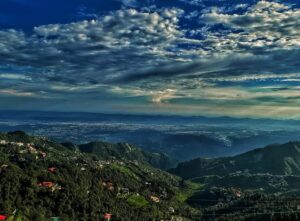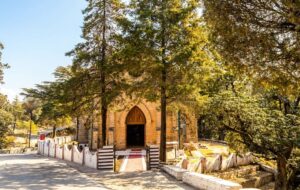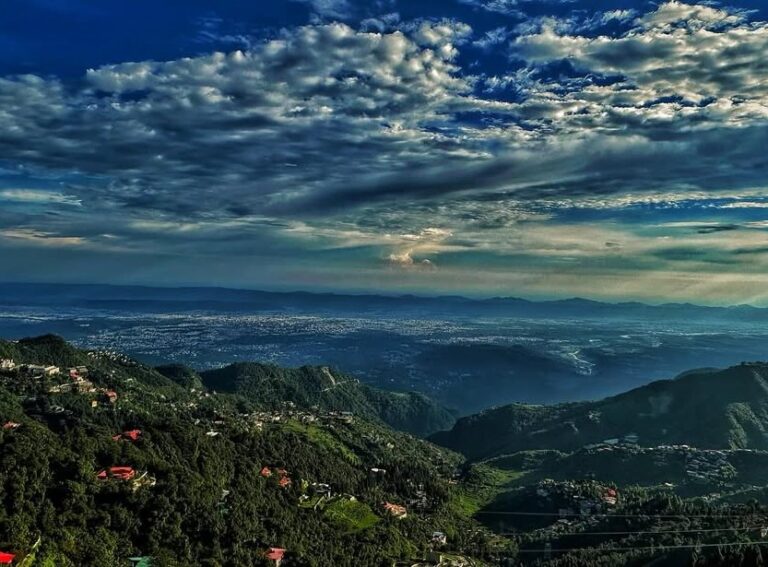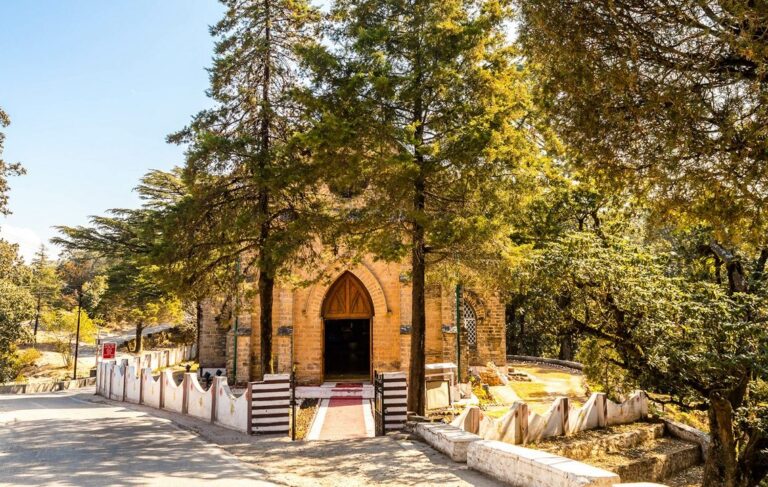Discover Qutb Minar New Delhi India | Timings and Ticket Price
Qutb Minar: An Iconic Landmark of New Delhi, India
Standing tall in Delhi, India, the Qutb Minar New Delhi is one of Asia’s tallest minarets and an architectural marvel made largely of red sandstone. Reaching an impressive height of 238 feet (72.5 meters), it holds the distinction of being the tallest stone tower in India. Construction began around 1199 AD under Qutb al-Din Aibak, the founder of the Slave dynasty, and was completed by his successor, Iltutmish. Recognized as a UNESCO World Heritage Site in 1993, the Qutb Minar is a remarkable example of medieval Indian architecture and a symbol of the Delhi Sultanate‘s historical dominance.
Significance and Architecture
The Qutb Minar New Delhi was designed as a minaret, a tower from which Muslims are called to prayer five times daily. Its striking architectural design features fluted sandstone with intricate marble inlays and is divided into five stories, each marked by projecting balconies. The first three tiers are built from red and buff sandstone, while the fourth and fifth stories consist of marble and sandstone. Richly carved inscriptions from the Quran adorn the tower, adding to its spiritual and cultural significance.
Built as a part of the Quwat ul-Islam Mosque, the Qutb Minar New Delhi also served as a victory monument to commemorate the Delhi Sultanate’s conquest over rival kingdoms. The mosque, completed in 1196 AD, was constructed using the remains of demolished Hindu temples, making it a unique blend of Islamic and Indian architectural elements. Its arched facade and intricate floral decorations reflect traditional Indian craftsmanship, while the layout of the mosque adheres to Islamic design principles.
Suggested Read : About Taj Mahal Agra Facts: You Probably Didn’t Know“
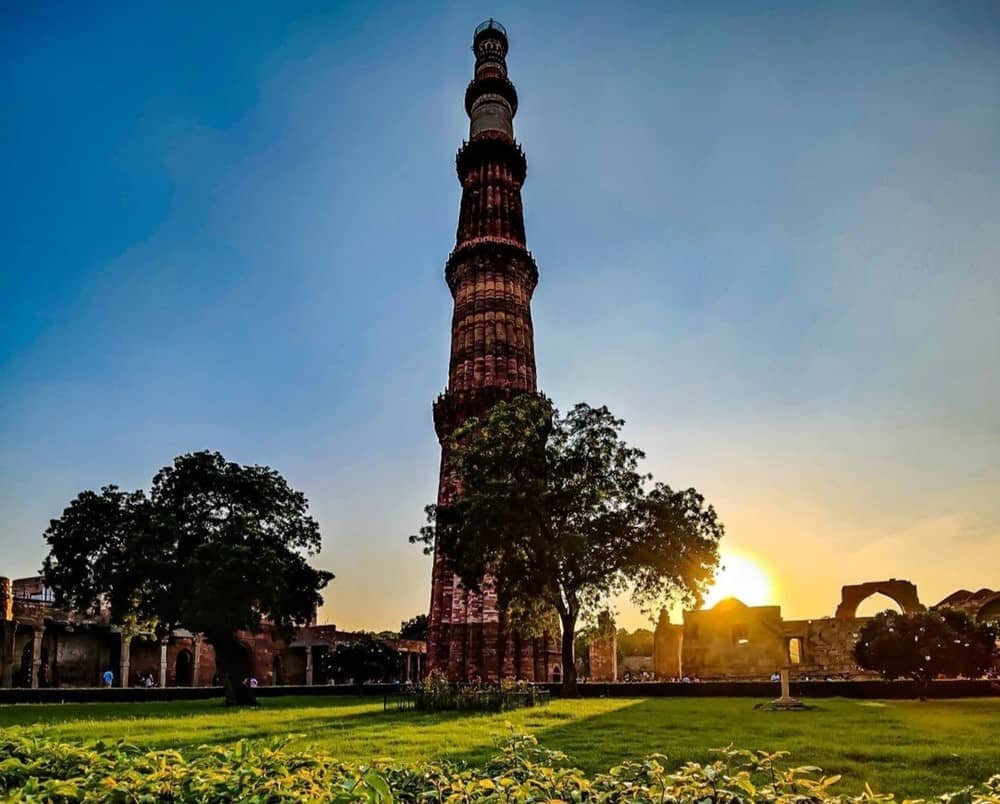
Restoration and Resilience
The Qutb Minar New Delhi has withstood the test of time, surviving multiple natural disasters. It suffered damage from lightning strikes and earthquakes during the 14th and 15th centuries. However, local rulers undertook various restoration efforts to preserve the tower, with significant work done by Sikandar Lodi in the early 16th century. Lodi not only repaired the damage but also expanded the top two tiers of the minaret.
Qutub Minar New Delhi | Timings and Ticket Price Details
- Timings: Open daily from 6:00 AM to 9:00 PM.
- Entry Fee: Indian nationals: INR 35 | Foreign nationals: INR 550
- Separate tickets are available for after-sunset visits.
- Important: Tripods and similar accessories are not permitted inside the complex.
Dining with a View of Qutub Minar
Several restaurants in the vicinity offer the chance to enjoy a meal with a spectacular view of the illuminated Qutub Minar in the background. Dining here after sunset provides a unique and serene experience of the monument.
This makes Qutub Minar a perfect spot for not only a historical visit but also an evening outing with a beautiful backdrop!
Interesting Facts
- The Qutub Minar has five stories, each with a projecting balcony. The first three stories are made of red sandstone, while the last two are crafted from marble and sandstone.
- The Quranic verses carved on the walls highlight the exceptional craftsmanship of medieval times.
- Despite being struck by lightning and undergoing restoration over the centuries, the monument remains a testament to architectural resilience.
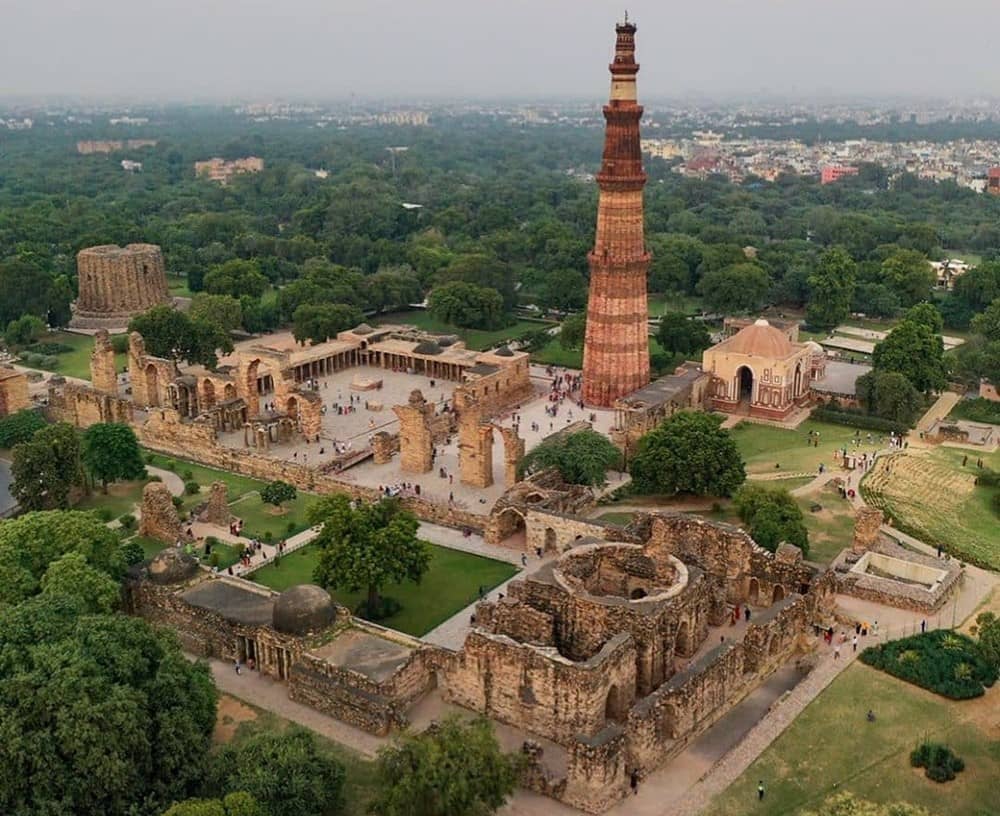
Key Attractions in the Qutb Minar Complex
The Qutb Minar complex is home to several other significant monuments. The Iron Pillar, which dates back to the Gupta period around 400 AD, stands in the mosque’s courtyard. At over 23 feet (7 meters) tall and weighing more than 6 tons, the pillar is renowned for its remarkable corrosion resistance. Despite being over 1,600 years old, the pillar remains in excellent condition, showcasing the advanced metallurgical skills of ancient India.
Other notable structures in the complex include the Ala’i Gate, built by Alauddin Khalji, and the tomb of Iltutmish, both reflecting the rich architectural heritage of the Delhi Sultanate.
The Qutb Minar New Delhi, towering over the skyline of Delhi, is the world’s tallest brick minaret and a must-see for history enthusiasts. This iconic structure, standing 73 feet tall, is a five-storeyed masterpiece from the medieval era. Each floor features stunning projecting balconies, with the first three storeys made of red sandstone, while the fourth and fifth floors are built from marble and sandstone. Recognized as a UNESCO World Heritage Site, the Qutub Minar remains a testament to the architectural brilliance of medieval India.
Located in Mehrauli, Delhi, the Qutub Minar was commissioned by Qutub-ud-din Aibak, the founder of the Mamluk dynasty (1206-1290). Inspired by the victory tower in Ghazni, Afghanistan, construction began in 1192 AD. However, Aibak passed away before its completion, and the Qutb Minar New Delhi was later finished by his successors, Iltutmish and Firoz Shah Tughlaq.
Explore the Mehrauli Archaeological Park
A short distance from the Qutb Minar New Delhi, visitors can explore the Mehrauli Archaeological Park, home to the tomb of Ghiyas-ud-din Balban, a former ruler of the Delhi Sultanate. The park is rich in history and architecture, providing further insight into Delhi’s medieval past.
Additionally, the complex is home to the Jamali Kamali Mosque and the tomb of a revered Sufi saint.
Qutub Festival: A Celebration of Classical Art and Culture
For an immersive cultural experience, plan your visit during the Qutub Festival, held annually in November and December. This three-day festival features classical dance and music performances, making it a popular attraction for both tourists and locals.
Best Time to Visit
The ideal period to visit is between October and March, when Delhi’s weather is cooler. For the most comfortable experience, plan your visit during early mornings or late afternoons to avoid the harsh midday sun.
Things to Do
- Photography: Capture the beauty of the Qutb Minar New Delhi and its scenic surroundings.
- Explore Surrounding Monuments: Discover the Iron Pillar, Alai Darwaza, and other structures in the Qutub complex.
- Attend the Qutub Festival: Experience a celebration of Indian classical music and dance at this annual event organized by Delhi Tourism.
Traveller Tips
- Wear Comfortable Footwear: The complex is large, and walking will be necessary.
- Respect the Monuments: Help preserve the intricate carvings by avoiding touching them.
- Beware of Touts: Book your tours through reputable agencies or seek trusted recommendations.
- Stay Refreshed: Carry a water bottle, especially if visiting during the hotter months.
Availability of Guides
You can hire certified guides at the entrance for a nominal fee, or opt for audio guides for a more flexible, self-paced experience.
How to Reach
- By Metro: Take the Yellow Line to Qutub Minar Metro Station, 2 km from the monument. Auto-rickshaws are available from there.
- By Road: Cabs and auto-rickshaws from central Delhi are convenient options.
- By Bus: State-run buses also connect the site to different parts of the city.
Nearby Attractions
- Mehrauli Archaeological Park: Adjacent to Qutb Minar New Delhi, this park offers a glimpse into history with numerous monuments spread over 200 acres.
- Garden of Five Senses: A tranquil garden designed to stimulate all five senses, perfect for nature and art lovers.
- Sultanpur Bird Sanctuary: Ideal for birdwatchers, especially during migratory seasons.
- Dilli Haat: Experience India’s vibrant culture, art, and cuisine in one lively marketplace.
The Qutb Minar New Delhi not only offers a deep dive into India’s history but also an enriching cultural experience.
Conclusion
Whether you’re a history buff, architecture enthusiast, or simply someone exploring the best of Delhi’s heritage, the Qutb Minar New Delhi and its surrounding complex offer a rich cultural experience. From its towering heights to the intricate monuments, the Qutb Minar New Delhi continues to be a symbol of Delhi’s magnificent past.


